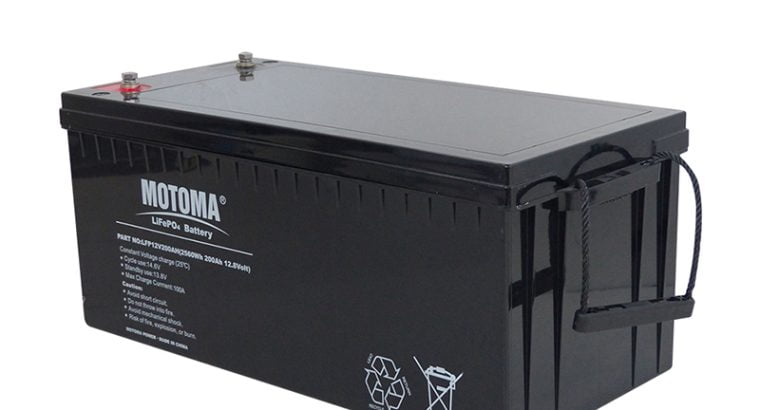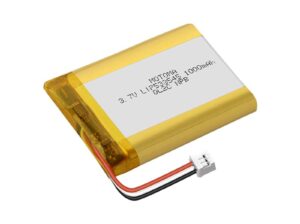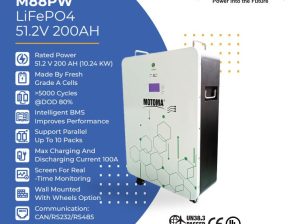lifepo4 battery Get the Long-Lasting Performance You Need
“Power Up with Lifepo4 Battery: Get the Long-Lasting Performance You Need”
A lithium iron phosphate (LiFePO4 or LFP) battery is a type of rechargeable battery that has become increasingly popular for use in consumer electronics, electric vehicles, and other applications requiring high power and energy density. Compared to other types of lithium-ion batteries, LiFePO4 batteries offer a longer lifespan, higher efficiency, and improved safety. They are also relatively lightweight and can be charged quickly. As such, LiFePO4 batteries are becoming an increasingly attractive option for a wide range of applications.
Table of Contents
- Introduction
- What You Need to Know About Safety and Lifepo4 Batteries
- The Advantages of Using a Lifepo4 Battery in Renewable Energy Applications
- Tips for Selecting the Right Lifepo4 Battery for Your Application
- How to Extend the Lifespan of a Lifepo4 Battery
- Understanding the Benefits of Using a Lifepo4 Battery
- Conclusion
What You Need to Know About Safety and Lifepo4 Batteries
Lithium-ion (Li-ion) and lithium-iron-phosphate (LiFePO4) batteries have become increasingly popular for powering various electronic devices, such as mobile phones, laptops, and electric vehicles. While Li-ion batteries are the most commonly used type of battery, LiFePO4 batteries are gaining in popularity due to their increased safety features. In order to understand the safety features of LiFePO4 batteries, it is important to understand the differences between the two types of batteries.
Li-ion batteries are composed of a lithium-metal oxide cathode and a graphite-based anode. The anode and cathode are separated by a polymer electrolyte. When a Li-ion battery is charged, lithium ions are transferred from the anode to the cathode. This process creates an electric current that can be used to power devices.
LiFePO4 batteries, on the other hand, are composed of a lithium-iron-phosphate cathode and a carbon-based anode. The anode and cathode are separated by a liquid electrolyte. LiFePO4 batteries are safer than Li-ion batteries due to their chemical composition. The iron-phosphate cathode is highly stable and will not release oxygen if exposed to excessive heat or pressure, making it less prone to thermal runaway and fire. Additionally, the liquid electrolyte is less flammable than the polymer electrolyte used in Li
The Advantages of Using a Lifepo4 Battery in Renewable Energy Applications
Using a lithium iron phosphate (LiFePO4) battery in renewable energy applications offers a number of advantages over more traditional battery technologies. LiFePO4 batteries are known for their long cycle life, high energy density, and low cost, making them ideal for renewable energy applications such as wind and solar power.
First, LiFePO4 batteries offer a longer cycle life than other battery technologies. This means they can be recharged and used more times before needing to be replaced. This is especially beneficial in renewable energy applications, where batteries are constantly cycling over time. The long cycle life of LiFePO4 batteries also helps reduce the cost of ownership over time, making them an attractive option for renewable energy systems.
Second, LiFePO4 batteries have a high energy density, meaning that more energy can be stored in a smaller space. This is especially important for renewable energy applications, where space is often at a premium. With a high energy density, LiFePO4 batteries can store more energy in a smaller package, allowing for more efficient use of space.
Third, LiFePO4 batteries are relatively inexpensive compared to other battery technologies. This makes them an attractive option for many renewable energy applications, as they can often be used in place of more expensive alternatives. The low cost of LiFePO4 batteries also makes them more affordable for individuals and businesses who are looking to invest in renewable energy systems.
Tips for Selecting the Right Lifepo4 Battery for Your Application
1. Determine the Capacity: The capacity of a Lifepo4 battery is measured in amp-hour (Ah). To determine the capacity you need to calculate the total amount of energy required to power your system.
2. Consider the Number of Cells: The number of cells needed depends on the voltage requirements of your application. The more cells you have, the higher the voltage output.
3. Choose the Right Dimensions: Consider the size and shape of the battery that is most suitable for your application. Many Lifepo4 batteries come in a variety of sizes and shapes so you can select the one that best fits your application.
4. Determine the Discharge/Charge Current: The discharge and charge current of a Lifepo4 battery must be taken into consideration when selecting the right one for your application. The higher the discharge/charge current, the more efficient the battery will be.
5. Consider the Battery Management System: If your application requires a battery management system, you must select a battery that is compatible with the system.
6. Look for Quality: You should always make sure to purchase high-quality Lifepo4 batteries that are designed to meet the requirements of your application. Look for batteries that have been tested for safety and performance.
How to Extend the Lifespan of a Lifepo4 Battery
Lithium iron phosphate (LiFePO4) batteries are an increasingly popular choice for powering a wide range of devices, from electric vehicles to consumer electronics. They offer a number of advantages, including a long lifespan and high energy density. However, like all batteries, LiFePO4 batteries will eventually wear out. To help ensure that your battery lasts as long as possible, here are some tips for extending its lifespan:
1. Store Properly: When not in use, store your LiFePO4 battery in a cool, dry place with a moderate temperature. Avoid storing the battery in extremely hot or cold environments, as this can reduce the battery’s lifespan.
2. Avoid Overcharging: Overcharging your LiFePO4 battery can reduce its capacity and lifespan. To avoid this, use a charger specifically designed for LiFePO4 batteries and only charge the battery when necessary.
3. Keep Voltage Within Range: LiFePO4 batteries should be kept within their recommended voltage range to ensure maximum performance and lifespan. If the voltage drops too low or rises too high, it can cause permanent damage to the battery.
4. Balance Charge: When charging LiFePO4 batteries, it’s important to balance and charge them. This means that all of the cells in the battery are charged to the same voltage level. This helps to reduce the stress on the cells and extend the battery’s lifespan.
5. Monitor Regular
Understanding the Benefits of Using a Lifepo4 Battery
Lithium-ion batteries, specifically lithium iron phosphate (LiFePO4) batteries, have become increasingly popular in recent years due to their numerous benefits. LiFePO4 batteries are used in a variety of applications, from portable electronics to electric vehicles. The unique properties of LiFePO4 batteries make them an attractive option for many applications.
One of the primary benefits of LiFePO4 batteries is their high energy density. This means that they can store a large amount of energy in a relatively small package. This makes them ideal for applications that require a lot of power, such as electric vehicles, where a large amount of power is needed to move the vehicle.
Another advantage of LiFePO4 batteries is their long life. LiFePO4 batteries typically have a life span of 3000-6000 charge cycles, which is significantly longer than other types of lithium-ion batteries. This makes them a much better choice for applications that require frequent recharging, such as electric vehicles.
LiFePO4 batteries are also much safer than other types of lithium-ion batteries. LiFePO4 batteries have a much lower risk of catching fire or exploding than other types of lithium-ion batteries. This is due to the fact that LiFePO4 batteries use a different chemical composition than other types of lithium-ion batteries.
Finally, LiFePO4 batteries are relatively inexpensive compared to other types of lithium-ion batteries. This makes them an
Conclusion
The LiFePO4 battery is an excellent choice for any application that requires a reliable and long-lasting power source. With its high energy density and long cycle life, the LiFePO4 battery is a great choice for any application that needs a reliable, efficient, and safe energy source. Its low maintenance requirements also make it an attractive option for those who need a dependable and easy-to-maintain battery for their applications.
Comments (2)
You must be logged in to post a comment.




[…] used in auxiliary power applications. This standard covers the construction, validation, and performance requirements for batteries used in these […]
[…] summary, high-voltage LiPo batteries offer increased voltage, energy density, power output, and performance compared to standard LiPo batteries. They find applications in various fields, including radio-controlled vehicles, electric flights, […]